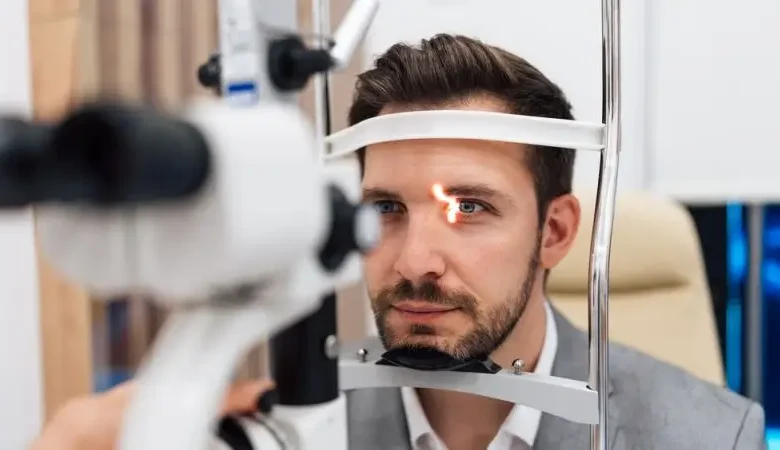Great eyecare tips to de-stress and protect your vision

Digital screens have become an indispensable part of work life, be it as inconsequential screen time for scheduling a meeting on the calendar or sitting at the desk and working on the laptop for long office hours. The strain on the eyes is undeniably unhealthy but the screens can’t necessarily be eliminated with the irrefutable involvement of technology in work nowadays. The digital eye strain has serious side effects and needs to be addressed to maintain a healthy relationship with technology at work.
In an interview with HT, Dr Ajay Sharma, Chief Medical Director of Eye-Q, talked about digital eye syndrome and said, “Digital eye strain, also referred to as computer vision syndrome (CVS), is becoming increasingly common, particularly for people working from home where prolonged screen use is the norm. Research shows that over 50% of individuals who spend significant time on computers suffer from some degree of eye strain, highlighting how widespread this issue has become.”
Dr Sharma revealed that increased and persistent screen exposure while working, is one of the primary reasons for severe digital eye strain. This leads to accommodative stress, which occurs when the eyes are forced to focus on a screen at a set distance, for prolonged periods.
Effects of eye strain
Stressing how prolonged exposure to screens weakens the eye muscles, Dr Sharma said, “This continuous strain can exhaust the muscles responsible for focusing, leading to discomfort, blurry vision, and difficulty switching focus. Over time, it may even cause headaches and persistent visual disturbances.”
He also described other eye concerns that can develop from eye strain and said, “Binocular vision stress may develop when the eyes have to work harder together to maintain clear vision at close range. This added effort can put a strain on the eye muscles, resulting in symptoms like double vision or the feeling that the eyes are not properly aligned.”
As the blink rate reduces significantly when exposed to digital screens, dry eye syndrome develops. According to Dr Sharma,” Dry eye syndrome is another concern. When using digital devices, the blink rate often drops, reducing tear production and causing tears to evaporate more quickly. This can lead to symptoms like irritation, redness, and a gritty feeling, and if left unaddressed, may even increase the risk of corneal damage and chronic eye discomfort.”
Techniques to relieve eye strain
Dr Sharma recommended some techniques to help reduce eye discomfort and maintain eye health. These simple yet impactful methods support long-term eye wellness, especially regarding digital screen exposure –
1. 20-20-20 rule
The vision gets fixated on the screen for prolonged periods which triggers all the eye concerns. To break away from the screen, the 20-20-20 rule is a useful practice for taking breaks from the screen. Dr Sharma advised, “Every 20 minutes, take a 20-second break to focus on something 20 feet away.” This simple method, done frequently throughout the day, helps a lot in developing a healthier relationship with screen time.
2. Optimise screen setting
Often without realising, the screen’s font and brightness are at less eye-friendly levels. It is visually very jarring and creates more pressure on the eyes. Dr Sharma suggested, “Tweak the brightness, contrast and text size to minimise eye strain.” Calibrating the setting for effective viewing is better for the health of the eyes.
3. Sync ambiance light with screen light
Wherever you work, that space needs to be properly lit. Dr Sharma emphasised the importance of ambiance lighting and said that adequate lighting reduces screen glare. Ambient lighting also helps to alleviate eye strain. The brightness of the ambient lighting should be more or less equal to that of the screen to prevent eye discomfort caused by contrast in brightness.
4. Eye drops for dry eye
Often, there will be a feeling of itchiness and dryness in the eyes from the long period of screentime. Dr Sharma suggested using lubricating eye drops. The artificial tears help relieve dry eye symptoms.
5. Blink frequently
Make it a habit to blink more often when using screens. Dr Sharma advised blinking regularly to keep eyes moist. Along with it, frequently blinking consistently provides a fraction of respite from the screen.









